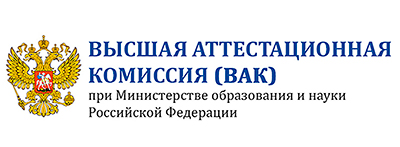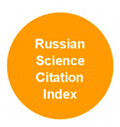Модели взросления разных поколений россиян
Аннотация
На базе данных обследования «Родители и дети, мужчины и женщины в семье и обществе» (2011 г., 5451 человек) проведен количественный анализ наступления стартовых событий жизни, маркирующих взросление. В качестве таких событий взяты получение профессионального образования, первое трудоустройство, первое отделение от родителей, первое партнерство (незарегистрированные отношения с совместным проживанием), первый брак и рождение первого ребенка.
Результаты визуализированы на демографической сетке Лексиса, что наглядно представляет влияние исторического и институционального контекста на организацию жизненного пути индивидов. Действующие законодательные и социальные нормы задают границы вариативности сценариев взросления в каждый момент времени и определяют скорость обновления социальных практик.
Выявлены три модели перехода во взрослую жизнь в России: «советская» (характерна для поколений 1940-49, 1950-59, 1960-69 годов рождения), «переходная» (поколения 1930-39 и 1970-79 годов рождения) и «постсоветская» (поколение 1980-86 годов рождения). Сравнение моделей перехода во взрослую жизнь в России и европейских странах показало наличие конвергенции паттернов взросления между странами, а также выявило запаздывание демографического перехода в России примерно на 20-25 лет, что подтверждает предположение о стадиальности модернизационного процесса.
Скачивания
Литература
Arkhangel'skij V.N. (2013). Reproduktivnoe i brachnoe povedenie [Reproductive and marital behavior]. Sociologicheskie issledovaniya [Sociological studies], 2, 129–136. (In Russ.).
Arnett J.J. (2012). New Horizons in Research on Emerging and Young Adulthood. In Early Adulthood in a Family Context (pp. 231–244). NY: Springer.
Artamonova A.V., Mitrofanova E.S. (2014). Is cohabitation an alternative to marriage in Russia? Political behavior: Race, Ethnicity & Identity Politics eJournal. 8(134). URL: https://hq.ssrn.com/Journals/IssueProof.cfm?abstractid=2513302&journalid=999052&issue_number=134&volume=8&journal_type=CMBO&function=showissue
Artamonova A.V., Mitrofanova E.S. (2018). Matrimonial'noe povedenie rossiyan na fone drugih evropejcev [Matrimonial behavior of Russians in the European context]. Demograficheskoe obozrenie [Demographic Review], 5(1), 106–137. (In Russ.).
Berger P., Luckmann T. (1966). The Social Construction of Reality: A Treatise in the Sociology of Knowledge. Garden City, NY: First Anchor.
Billari F.C., Giuntella O., Stella L. (2019). Does broadband Internet affect fertility? Population Studies, 73(3), 297-316. DOI: https://doi.org/10.1080/00324728.2019.1584327
Billari F.C., Hagestad G.O., Liefbroer A.C., Spéder Z. (2005). The Timing of Life: The Organization of the Life Course in Europe. In The timing of life: The organisation of the life course in Europe. URL: http://www.europeansocialsurvey.org/docs/round3/questionnaire/ESS3_billari_proposal.pdf
Billari F.C., Liefbroer A.C. (2007). Should I Stay or Should I Go? The Impact of Age Norms on Leaving Home. Demography, 44(1), 181-198. URL: https://link.springer.com/article/10.1353%2Fdem.2007.0000
Billari F.C., Liefbroer A.C. (2010). Towards a new pattern of transition to adulthood? Advances in Life Course Research, 15(2), 59–75.
Blum A., Lefèvre C., Sebille P., Badurashvili I., Régnier-Loilier A., Stankuniene V., Sinyavskaya O. (2010). Sem'ya v chetyrekh gosudarstvah: Franciya, Gruziya, Litva, Rossiya [Family in four states: France, Georgia, Lithuania, Russia]. In Evolyuciya sem'i v Evrope: Vostok-Zapad [Evolution of the Family in Europe: East-West] (pp. 11–41). Moscow: NISP. (In Russ.).
Blum A., Sebij P., Zakharov S.V. (2010). Vzroslenie vo Francii i Rossii: Razlichiya v perspektive pokolenij [Growing up in France and Russia: Differences in generational perspective]. In Evolyuciya sem'i v Evrope: Vostok-Zapad [Evolution of the Family in Europe: East-West] (pp. 141–174). Moscow: NISP. (In Russ.).
Buchmann M. (1989). The script of life in modern society: Entry into adulthood in a changing world. Chicago: University of Chicago Press.
Buchmann M.C., Kriesi I. (2011). Transition to Adulthood in Europe. Annual Review of Sociology, 37, 481-503. DOI: https://doi.org/10.1146/annurev-soc-081309-150212
Cavalli A., Galland O. (Eds.) (1993). L’allongement de la jeunesse. Paris: Actes Sud.
Chernova Zh.V. (2012). Specifika gendernyh otnoshenij molodyh vzroslyh [Specificity of gender relations of young adults]. Sociologicheskie issledovaniya [Sociological Studies], 7, 118–127. (In Russ.)
Dolbik-Vorobej T. (2003). Studencheskaya molodezh' o problemah braka i rozhdaemosti [Student youth about the problems of marriage and fertility]. Sociologicheskie issledovaniya [Sociological Studies], 11, 78–83. (In Russ.).
Ejrnœs A., Boje T.P. (2008). Family Policy and Welfare Regimes. In Report 3: Labour Market and social Policies. Aberdeen: University of Aberdeen.
Erikson E.H. (1995). Identity: Youth and Crisis. New York: W.W. Norton & Company.
Esping-Andersen G. (1990). The Three Worlds of Welfare Capitalism. NJ: Polity Press.
Esping-Andersen G. (2007). Family formation and family dilemmas in contemporary Europe. Fundacio´n BBVA.
Frejka T., Zakharov S. (2012). Comprehensive analyses of fertility trends in the Russian Federation during the past half century. Rostock: Max Planck Institute for Demographic Research (MPIDR working paper WP-2012-027).
Giddens A. (1994). Living in a post-traditional society. Reflexive modernization: Politics, tradition and aesthetics in the modern social order, 56, 100.
Gimpel'son V.E., Zudina A.A. (2017). Demograficheskie problemy rynka truda [Demographic problems of the labour market]. Demoscope Weekly, 729–730. (In Russ.). URL: http://www.demoscope.ru/weekly/2017/0729/tema01.php
Gradoselskiy V. (2005). Komplektovanie vooruzhennih sil SSSR v 1970—1980-е gody [Completion of Soviet Union armed forces in 1970-1980]. Voenno-istoricheskiy zhurnal [War-historical Journal], 9, 18-21. (In Russ.).
Hajnal J. (1965). European marriage patterns in perspective. In Glass D.V., Eversley D.E. (Eds.), Population in history: Essays in historical demography (pp. 101–143). URL: https://www.popline.org/node/517620
Heinz W.R., Marshall V.W. (2003). Social dynamics of the life course: Transitions, institutions, and interrelations. New York: Aldine de Gruyter.
Huinink J. (2013). De-Standardisation or Changing Life Course Patterns? Transition to Adulthood from a Demographic Perspective. In The Demography of Europe (pp. 99–118). Springer, Dordrecht. DOI: https://doi.org/10.1007/978-90-481-8978-6_5
Inglhart R. (2018). Kul'turnaya evolyuciya. Kak izmenyayutsya chelovecheskie motivacii i kak eto menyaet mir [Cultural evolution. How human motivations change and how it changes the world]. (In Russ.). URL: https://sotsium.ru/uploads/files/demo-mysl/inglehart_p1-40.pdf
Kiernan K. (2002). Cohabitation in Western Europe: Trends, issues and implications. In Booth A., Crouter A. (Eds.), Just Living Together: Implications of cohabitation on families, children and social policy (pp. 3–31). New York: Lawrence Erlbaum Associates.
Konstantinovskij D.L. (2008). Neravenstvo i obrazovanie. Opyt sociologicheskih issledovanij zhiznennogo starta rossijskoj molodezhi (1960-e gody–nachalo 2000-h) [Inequality and education. Experience of sociological research of life start of Russian youth (1960s-early 2000s)]. Moscow: Centr social'nogo prognozirovaniya. (In Russ.)
Lapeto A., Tereshchenko O.V., Shaverdo T. (2018). Perekhod v samostoyatel'nuyu zhizn': Vozrastnye modeli zhiznennyh putej [Transition to independent life: Age models of life paths]. In O. Tereshchenko, T. Kuchera (Eds.), Belarus': Struktura sem'i, semejnye otnosheniya, reproduktivnoe povedenie: Tom II. Analiz rezul'tatov issledovaniya «Pokoleniya i gender» [Belarus: Family structure, family relations, reproductive behavior: Vol. II. Analysis of the results of Generations and Gender Survey] (pp. 14–22). Minsk: Belsens. (In Russ.)
Lesthaeghe R. (1995). The second demographic transition in Western countries: An interpretation. In Gender and family change in industrialized countries (pp. 17–62). Oxford: Clarendon Press.
Lesthaeghe R., Neels K. (2002). From the First to the Second Demographic Transition: An Interpretation of the Spatial Continuity of Demographic Innovation in France, Belgium and Switzerland European. Journal of Population, 18(4), 325–360.
Liefbroer A.C. (1999). From Youth to Adulthood: Understanding Changing Patterns of Family Formation from a Life Course Perspective. In Population Issues (pp. 53–85). The Netherlands: Springer.
Magun V.S., Engovatov M.V. (2006). Dinamika prityazanij i izmenenie resursnyh strategij molodezhi: 1985-2005 gody [Trends in claims and changes in resource strategies of young people: 1985-2005]. Otechestvennye zapiski [Annals of the Fatherland], 3, 76–96. (In Russ.)
Mead M. (1988). Kul'tura i mir detstva [Culture and the world of childhood]. Moscow: Nauka. (In Russ.)
Mills M. (2004). Stability and change: The structuration of partnership histories in Canada, the Netherlands, and the Russian Federation. European Journal of Population/Revue européenne de Démographie, 20(2), 141–175.
Potârcă G., Mills M., Lesnard L. (2013). Family Formation Trajectories in Romania, the Russian Federation and France: Towards the Second Demographic Transition? European Journal of Population/Revue européenne de Démographie, 29(1), 69–101. DOI: https://doi.org/10.1007/s10680-012-9279-9
Puur A., Rahnu L., Maslauskaite A., Stankuniene V. (2012a). Past and present patterns of family formation in Eastern Europe: Does Hajnal’s delineation still matter? Filosofija Sociologija, 23(4), 256–265.
Puur A., Rahnu L., Maslauskaite A., Stankuniene V., Zakharov S. (2012b). Transformation of Partnership Formation in Eastern Europe: The Legacy of the Past Demographic Divide. Journal of Comparative Family Studies, 43(3), 389–417.
Remshmidt H. (1994). Podrostkovyj i yunosheskij vozrast: Problemy stanovleniya lichnosti [Adolescence and youth: Problems of personality formation]. (In Russ.) URL: http://www.childpsy.ru/lib/books/id/8335.php
Rindfuss R.R. (1991). The Young Adult Years: Diversity, Structural Change, and Fertility. Demography, 28(4), 493–512. URL: https://link.springer.com/article/10.2307%2F2061419
Salyakhieva L.M., Saveleva Z.V. (2017). Childfree as a Social Phenomenon: Russians’ Attitude to Voluntary Childlessness. Tarih Kültür ve Sanat Araştırmaları Dergisi, 6(4), 531–537. DOI: https://doi.org/10.7596/taksad.v6i4.1144
Shabunova A.A., Kalachikova O.N. (2015). Problemy transformacii demograficheskih institutov: Sem'ya i brak [Challenges to the transformation of demographic institutions: Family and marriage]. Sociologicheskij al'manah [Sociological almanac], 6, 151–165. (In Russ.)
Shoven J.B., Goda G.S. (2011). Adjusting Government Policies for Age Inflation. In Demography and the Economy (pp. 143–168). DOI: https://doi.org/10.7208/chicago/9780226754758.003.0005
Sobotka T., Toulemon L. (2008). Changing family and partnership behaviour: Common trends and persistent diversity across Europe. Demographic Research, 19, 85–138. DOI: https://doi.org/10.4054/DemRes.2008.19.6
van de Kaa D. J. (1987). Europe’s Second Demographic Transition. Population Bulletin, 42, 3–57.
Vil'danova S.M., Granichnaya A.A., Mingalieva A.R., Salyahieva L.M. (2017). Tendencii rasprostraneniya cennostej chajldfri v Rossii i ih vliyanie na krizis instituta sem'i [Trends in the spread of childfrey values in Russia and their impact on the crisis of the institution of the family]. Monitoring obshchestvennogo mneniya: Ekonomicheskie i social'nye peremeny [Monitoring of Public Opinion: Economic and Social Changes Journal], 3(139), 192–205. (In Russ.).
Vishnevsky A.G. (1976). Demograficheskaja revolutsija. Moscow: Statistics. (In Russ.).
Vishnevsky A.G. (Ed.) (2006). Demograficheskaja modernizacija Rossii, 1900–2000 [Demographic modernization of Russia, 1900–2000]. Moscow: Novoe izdatel'stvo. (In Russ.).
Vogel J. (2002). European Welfare regimes and the transition to adulthood: A comparative and longitudinal perspective. Social Indicators Research, 59, 275–299.
Yarskaya-Smirnova E.R., Romanov P.V. (Eds.) (2008). Sovetskaya social'naya politika: sceny i dejstvuyushchie lica, 1940-1985 [Soviet social policy: scenes and actors, 1940-1985]. Moscow: OOO Variant, CSPGI. (In Russ.)
Zakharov S. (2008). Russian Federation: From the first to second demographic transition. Demographic Research, 19, 907–972. DOI: https://doi.org/10.4054/DemRes.2008.19.24
Zakharov S.V. (2007). Transformaciya brachno-partnerskih otnoshenij v Rossii: «zolotoj vek» tradicionnogo braka blizitsya k zakatu? [Transformation of marriage-partnership relations in Russia: the "golden age" of traditional marriage is nearing sunset?]. In T.M. Maleva, O.V. Sinyavskaya (Eds.), Roditeli i deti, muzhchiny i zhenshchiny v sem'e i obshchestve [Parents and children, men and women in the family and society]. Vol. 1 (pp. 75–127). Moscow: NISP. (In Russ.).
Zakharov S.V. (2009). Cennostno-normativnye «raspisaniya» chelovecheskoj zhizni: Predstavleniya zhitelej raznyh stran o tom, kogda devushka stanovitsya vzrosloj [Value-normative "schedules" of human life: Perceptions of people in different countries about when a girl becomes an adult]. In Rossiya v Evrope. Po materialam mezhdunarodnogo proekta «Evropejskoe social'noe issledovanie». [To Russia in Europe. Based on the international project "European Social Study"] (pp. 347–379). Moscow: Academia. (In Russ.).
Zdravomyslova O. M., Shurygina I.I. (2001). Vyzhit' ili preuspet': Predstavleniya starsheklassnikov o svoih zhiznennyh shansah [Survive or succeed: High school students "perceptions of their life chances]. In Kto i kuda stremitsya vesti Rossiyu? Aktory makro-, mezo- i mikrourovnej sovremennogo transformacionnogo processa [Who and Where Does Russia Seek to Lead? Actors of macro-, meso- and micro-levels of the modern transformation process] (pp. 366–374). (In Russ.). URL: http://ecsocman.hse.ru/data/250/679/1219/048.Zdravomyslova.pdf
Zsolt S., Murinkó L., Settersten Jr.R.A. (2014). Are Conceptions of Adulthood Universal and Unisex? Ages and Social Markers in 25 European Countries. Social Forces, 92(3), 873–898. DOI: https://doi.org/10.1093/sf/sot100
























